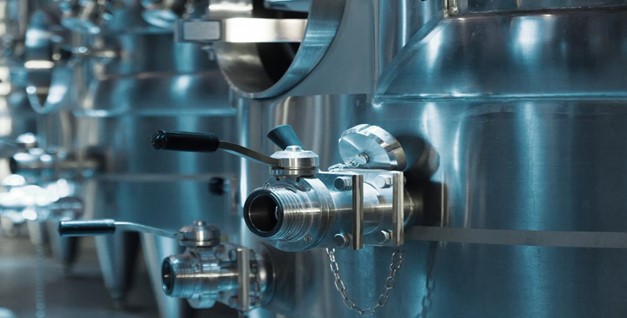The American Society of Mechanical Engineers (ASME) has created a unique set of standards encoded for manufacturing equipment used in different ‘pressurised’ processes. These codes aim to protect the systems against likely hazards due to the high pressure maintained in these equipment. ASME pressure vessel fabrication is based on the design codes, maintenance, construction and changes that are introduced in pressurised equipment.
By following these manufacturing techniques and adhering to ASME standards, manufacturers ensure safe and reliable operation of pressure vessels in various industrial applications.
Here, we discuss the importance of following the ASME code in manufacturing pressure vessel manway covers and other pressurising equipment.
ASME Pressure Vessel Fabrication: What is it?
ASME pressure vessel fabrication is the process of shaping metals by cutting, moulding, welding and assembling sheets to construct large containers to hold gasses and liquids at high pressures. ASME pressure vessels are designed and manufactured to match the ASME Boiler and Pressure Vessel Code (BPVC). The goal of ASME designs is to achieve a safety factor of 3.5-to-1.
ASME vessel fabrication techniques are used in manufacturing compliant vessels. Standard methods used are welding, forging, and brazing.
The actual manufacturing process includes preparing raw materials, scribing and blanking. The metals are then bent, formed, and edge processed for assembly. They are then welded and inspected for quality and code compliance.
Certain types of ASME pressure vessel fabrication, like tank fabrication, include other processes like pressing, spinning, post-weld heat treatment, and painting.
Pressure Vessel Manway Cover: What is it and how is it made?
A pressure vessel manway cover is used to access various pressure-rated equipment. These openings provide access to pressure vessels for maintenance, inspection, and repair.
Several pressure vessels are used as containers to hold liquids or gases at a pressure different from the ambient pressure. The primary purpose of pressure vessels is to store chemicals, lubricants, liquid fuel, and other chemicals under high pressure.
The manway covers are designed to withstand the pressures and temperatures inside the vessel while maintaining a tight seal to prevent leaks and other hazards. The best practice is maintaining internal pressure higher than the other equipment’s combined force, such as bolts, seats, and gaskets.
Pressure vessels can be almost any shape, but they are usually made of sections of spheres, cylinders, and cones.
Pressure vessel manway covers can consist of a cover and a cover lock. A swing mount with a tubular member, an arm, and a suspension connector supports the cover. The lock consists of studs secured to the cover.
Methods of ASME Pressure Vessel Fabrication
The primary focus of ASME pressure vessel fabrication is safety compliance, and it typically includes steps like cutting, bending, assembling metals, and welding.
Section VIII of ASME establishes safety compliance under the section on BPVC. It provides a detailed listing of requirements, design, fabrication, testing, inspection, and certification for fired and unfired pressure vessels. However, a note is that once the vessel is installed and commissioned for service, ASME is not applicable.
Conclusion
ASME pressure vessel fabrication uses various codes to ensure products are of the highest safety standards. A well-designed manway cover ensures the safe operation of the vessel. They are pressure-rated and come with a Certificate of Conformance to the ASME code. Manways and handholes are made from carbon and stainless steel. The common practice is to have pressure vessels with one or more pressure safety valves. This will help in managing overpressure in the vessels. A number of industries use pressure vessels for chemical reactants and the use of safety measures by using the manway covers. It is very important that the pressure vessels are made to the best industry standards as per safety regulations to protect from hazards.
